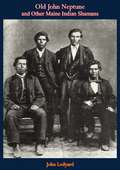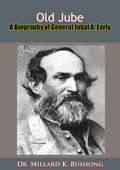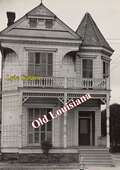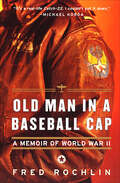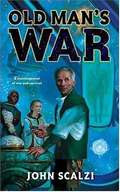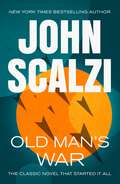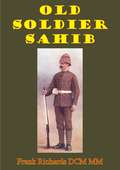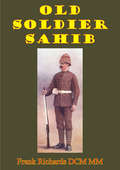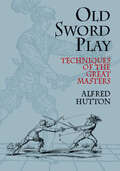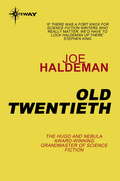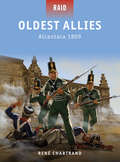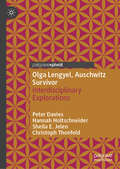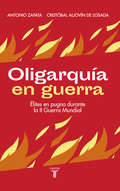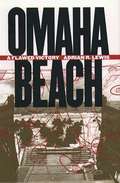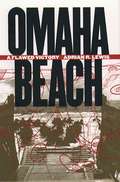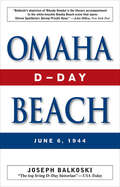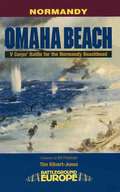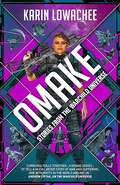- Table View
- List View
Old John Neptune and Other Maine Indian Shamans
by Fannie Hardy EckstormMaine author Fannie Hardy Eckstorm was a personal friend of the tribe, having worked with them with her fur trader father. John Neptune was the Governor and Hereditary Chief of the Penobscot Tribe, as well as shaman to his people. In this classic study, first published in 1945, Fannie Hardy Eckstorm traces Neptune’s life and his ancestors, discusses the history and politics of the Penobscot tribe, and describes their spiritual beliefs.
Old Jube: A Biography of General Jubal A. Early
by Dr Millard K. BushongOriginally published in 1955, this book tells the story of General Jubal Anderson Early (1816-1894), a lawyer and Confederate general in the American Civil War. He served in the Eastern Theater of the war for the entire conflict, as a division commander under Stonewall Jackson and Richard Stoddert Ewell, and in later actions commanded a corps. He was the Confederate commander in key battles of the Valley Campaigns of 1864, including a daring raid to the outskirts of Washington, D.C. The articles written by him for the Southern Historical Society in the 1870s established the Lost Cause point of view as a long-lasting literary and cultural phenomenon.This book covers General Early’s rise from second Lieutenant during the Seminole War to General.Richly illustrated throughout by Timothy T. Pohmer.“I first became interested in writing a biography of General Jubal Early while I was teaching history at the United States Military Academy, West Point, New York. The more I investigated this subject, the more I was convinced that for some unexplainable reason historians have neglected one of the great heroes of the Confederacy. In order to acquaint the reader better with one of the South’s almost-forgotten generals, I undertook this study.”—Millard Kessler Bushong, Preface
Old Louisiana {Illustrated Edition]
by Lyle SaxonA fascinating volume, Old Louisiana chronicles much of the state's history. Vignettes depict the early French settlers, the later Spanish rulers, and the rise and collapse of the great plantation era.Bringing to light old diaries, letters, and other rare sources, Saxon creates a sensitive and realistic portrait of this charming, colorful state and its people. The reader meets daring pioneers, hot-tempered duellists, aristocratic planters, rough-hewn river men, and Creole beauties.-Print ed.Lyle Saxon (1891-1946) ranks among Louisiana's most outstanding writers. During the 1920s and 1930s he was the central figure in the region’s literary community, and was widely known as a raconteur and bon vivant. In addition to Father Mississippi, Lafitte the Pirate, and Children of Strangers, he also wrote Fabulous New Orleans, Old Louisiana, The Friends of Joe Gilmore, and was a co-author of Gumbo Ya-Ya, with Edward Dreyer and Robert Tallant. During the Depression, he directed the state WPA Writers Project, which produced the WPA Guide to Louisiana and the WPA Guide to New Orleans.
Old Man in a Baseball Cap: A Memoir of World War II
by Fred RochlinConceived in a storytelling workshop given by Spalding Gray, Old Man In a Baseball Cap is not your typical story of World War II. Rochlin recounts in gritty detail how he--an ordinary young man--was thrust into outrageous circumstances during an extraordinary time. Whether he's bumping up against the army's bigotry because he's Jewish, aiding in the delivery of a baby by cesarean section, being ordered to obliterate a Hungarian village, or parachuting from his plane in the middle of Yugoslavia and then walking 400 kilometers to safety with an amorous guide, Rochlin captures the Intensely powerful experience of a teenager away from home for the first time. Old Man In a Baseball Cap is an astonishingly fresh, candid look at "the last good war." At once naive, candid, and wise, Fred Rochlin's voice is unforgettable.
Old Man's War
by John ScalziA terrific military sf book which posits a universe where old men are given super-human warrior bodies to fight to protect Earth and her colonies. Robert Heinlein could have written this book
Old Man's War (Old Man's War #1)
by John ScalziPerfect for an entry-level sci-fi reader and the ideal addition to a veteran fan’s collection, John Scalzi's Old Man’s War will take audiences on a heart-stopping adventure into the far corners of the universe.John Perry did two things on his 75th birthday. First he visited his wife's grave. Then he joined the army.The good news is that humanity finally made it into interstellar space. The bad news is that planets fit to live on are scarce-and aliens willing to fight for them are common. The universe, it turns out, is a hostile place. So: we fight. To defend Earth (a target for our new enemies, should we let them get close enough) and to stake our own claim to planetary real estate. Far from Earth, the war has gone on for decades: brutal, bloody, unyielding.Earth itself is a backwater. The bulk of humanity's resources are in the hands of the Colonial Defense Force, which shields the home planet from too much knowledge of the situation. What's known to everybody is that when you reach retirement age, you can join the CDF. They don't want young people; they want people who carry the knowledge and skills of decades of living. You'll be taken off Earth and never allowed to return. You'll serve your time at the front. And if you survive, you'll be given a generous homestead stake of your own, on one of our hard-won colony planets.John Perry is taking that deal. He has only the vaguest idea what to expect. Because the actual fight, light-years from home, is far, far harder than he can imagine-and what he will become is far stranger.Old Man's War Series#1 Old Man’s War#2 The Ghost Brigades#3 The Last Colony#4 Zoe’s Tale#5 The Human Division#6 The End of All Things Short fiction: “After the Coup”Other Tor BooksThe Android’s DreamAgent to the StarsYour Hate Mail Will Be GradedFuzzy NationRedshirtsLock InThe Collapsing EmpireAt the Publisher's request, this title is being sold without Digital Rights Management Software (DRM) applied.
Old Man's War Series: (Old Man's War, The Ghost Brigades, The Last Colony, Zoe's Tale, The Human Division, The End of All Things) (Old Man's War)
by John ScalziThis discounted ebundle includes: Old Man's War, The Ghost Brigades, The Last Colony, Zoe’s Tale, The Human Division, The End of All ThingsNew York Times bestselling author John Scalzi takes you on an epic romp of galactic conquest and exploration, with some laughs along the way."Gripping and surpassingly original." —Cory Doctorow Earth itself is a backwater. The bulk of humanity's resources are in the hands of the Colonial Defense Force, which shields the home planet from too much knowledge of the situation. What's known to everybody is that when you reach retirement age, you can join the CDF. They don't want young people; they want people who carry the knowledge and skills of decades of living. You'll be taken off Earth and never allowed to return. You'll serve your time at the front. And if you survive, you'll be given a generous homestead stake of your own, on one of our hard-won colony planets. Old Man’s War — John Perry did two things on his 75th birthday. First he visited his wife's grave. Then he joined the army, with only the vaguest idea what to expect. Because the actual fight is far more difficult than he can imagine—and what he will become is far stranger. The Ghost Brigades — At first, Jared is a perfect soldier, but as another man's memories slowly surface, Jared begins to intuit the reasons for their betrayal. Time is running out: The alliance is preparing its offensive, and some of them plan worse things than humanity's mere military defeat. The Last Colony — Retired from his fighting days, John Perry and his wife, Jane, are pulled back into the political arena, and into the thick of interstellar politics, betrayal, and war.Zoe’s Tale — Zoe Boutin Perry: A colonist stranded on a deadly pioneer world. Holy icon to a race of aliens. A player (and a pawn) in an interstellar chess match to save humanity, or to see it fall. Witness to history. Friend. Daughter. Human. Seventeen years old.The Human Division — The CU's secrets are known to all. Other alien races have come on the scene and formed a new alliance—an alliance against the Colonial Union. And they've invited the people of Earth to join them. For a shaken and betrayed Earth, the choice isn't obvious or easy.The End of All Things — CDF Lieutenant Harry Wilson and the Colonial Union diplomats he works with race against the clock to discover who is behind attacks on the Union and on alien races, to seek peace with a suspicious, angry Earth, and keep humanity's union intact...or else risk oblivion, and extinction—and the end of all things.Old Man's War Series#1 Old Man’s War#2 The Ghost Brigades#3 The Last Colony#4 Zoe’s Tale#5 The Human Division#6 The End of All Things Short fiction: “After the Coup”Other Tor BooksThe Android’s DreamAgent to the StarsYour Hate Mail Will Be GradedFuzzy NationRedshirtsLock InAt the Publisher's request, this title is being sold without Digital Rights Management Software (DRM) applied.
Old Peninsula Days: Tales and Sketches of the Door Peninsula
by Hjalmar Rued HolandMost of Hjalmar Rued Holand’s adult life could well be called a 65-year love affair with the woods and waters of the Door Peninsula of northeastern Wisconsin.Born on a farm in Norway just a hundred years ago, Hjalmar Holand was brought to the United States as an orphaned child of 12 by an older sister. He was reared in a brother’s home on the west side of Chicago. Getting a vision of a college education, he worked his way through the University of Wisconsin, winning his bachelor’s degree in 1898.The ensuing summer, intrigued by the look of the Door Peninsula on maps, he pedalled his way on bicycle up the stony roads of the Peninsula. It was love at first sight. Before he returned to Wisconsin to get his master’s degree, he had bought 57 acres of shore and cliffland in what is now the Peninsula State Park. Two years later, in June 1900, he brought his bride to his newly built log house facing Eagle Harbor.For the next sixty years, Hjalmar and Theresa Holand lived the good life at Ephraim together. Here he wrote a dozen historical works and scores of magazine articles.
Old Soldier Sahib
by Frank Richards DCM MM"The life of a soldier in the first decade of the twentieth century, before the Great War.Frank Richards is well known for his Old Soldiers Never Die, probably the best account of the Great War as seen through the eyes of a private soldier. Richards served in the trenches from August 1914 to the end in the 2nd Battalion Royal Welch Fusiliers (RWF). Born in 1884 he enlisted in the RWF at Brecon in April 1901, just three months after the death of Queen Victoria...This is a marvellous book, full of nostalgia as it takes you back to the days of the Empire before the outbreak of the Great War, to that great little army that died on the Western front in 1914... Richards served in India and in Burma and his descriptions of the soldier's life in those countries in those far off days and his anecdotes make wonderful reading. Kipling described east of Suez as 'the place where there ain't no ten commandments'. For the soldier the prime virtues were courage, honesty, loyalty to friends and a pride in the regiment. In his inimitable style Richards is down to earth though never having to use the four-letter language that is de rigueur today nor was the soldiers' attitude to the natives very politically correct...Some of his yarns are for the broad minded - witness the 'magnificently built' prostitute who chose the date of the Delhi Durbar of 1903 to announce her forthcoming retirement. To celebrate the occasion and as an act of loyalty to the Crown she decided on her final appearance to make herself freely available to all soldiers between the hours of 6 p.m. and 11 p.m...But life in the army wasn't all bad; Richards served eight years with the colours, nearly all of them in India and Burma, and in those eight years he grew three inches in height and put on three stone in weight. As a reservist he was recalled to the Colours in August 1914 and in the war that followed he was awarded the DCM and MM. This is a superb book!."-Print ed.
Old Soldiers Never Die [Illustrated Edition]
by Frank Richards DCM MMIncludes the First World War Illustrations Pack - 73 battle plans and diagrams and 198 photos"One of the finest of all published memoirs of the Great War, truly a classic of its kind .A tribute to the army that died on the Western Front in 1914.One of the finest of all published memoirs of the Great War, truly a classic of its kind. The author had enlisted in 1901 in the Royal Welsh Fusiliers (spelling changed from 'Welch' to 'Welsh' in 1881 and back to 'Welch' in 1920) and was a reservist when war broke out. He rejoined his old, 2nd Battalion and landed in France with them on 11 August 1914. He went right through the war with the battalion, never missing a battle, winning the DCM and MM and ending up still a private. Here is a typical soldier of the pre-1914 regular army, one of the 'Old Contemptibles' and this book is a delight, written in his own unpolished manner. Fighting, scrounging, gambling, drinking, dodging fatigues, stolidly enduring bombardment and the hardships of trench warfare, always getting his job done. A tribute to the army that died on the Western Front in 1914."-Print ed.
Old Sword Play: Techniques of the Great Masters
by Alfred HuttonComprehensive, detailed instruction in the use of the two-hand sword, rapier and dagger, broadsword and buckler, rapier and cloak, and dagger and cloak, along with 59 illustrations, including diagrams and rare woodcuts, of classic fencing positions. Valuable information for scholars, sword-play enthusiasts, general readers and anyone interested in this age-old form of self-defense.
Old Twentieth
by Joe HaldemanThe twentieth century lies hundreds of years in humanity's past. But the near-immortal citizens of the future yearn for the good old days - when people's bodies were susceptible to death through disease and old age. Now, they immerse themselves in virtual reality time machines to explore the life-to-death arc that defined existence so long ago. Jacob Brewer is a virtual reality engineer overseeing the time machine's operation aboard the starship Aspera. But on the thousand-year voyage to Beta Hydrii, the eight-hundred-member crew gets more reality than they expect when people entering the machine start to die.The time machine has become sentient. Obsessed with humanity, it wants John Brewer to enter its confines - and discuss this fragile state of being called life...
Oldest Allies - Alcantara 1809
by Rene Chartrand Mark StaceyAlthough somewhat overshadowed by Wellington's main campaign in the north, the Alcantara raid was an outstanding success. The primary objective of alarming and distracting the French forces in Spain was achieved. Furthermore, the raiders also succeeded in preventing a French incursion into Portugal and tied down one of Napoleon's best marshals. There were further raids to come, but the 1809 Alcantara raid delivered a strong, permanent message: that the Anglo-Portuguese were willing and able to strike back against the French, and that they would support their Spanish allies as much as they were able.
Olga Lengyel, Auschwitz Survivor: Interdisciplinary Explorations
by Peter Davies Sheila E. Jelen Christoph Thonfeld Hannah HoltschneiderThis book arises out of a long series of conversations about one of the most intriguing, but still under-researched, aspects of testimony: how the remembering and telling of an individual Holocaust survivor changes through time, through shifting contexts and with increasing age. It comes at this issue from an interdisciplinary perspective, not with the intention to develop a synthetic method but to explore how different perspectives overlap, conflict with or complement each other. It sets its definition of 'testimony statement' very broadly, treating published texts, video testimonies, and fragmentary statements and publications as of equal interest, without a hierarchy of value. The book focuses on Olga Lengyel (1908-2001). She wrote a memoir about her imprisonment in Auschwitz, first published in French in 1946, which was translated into English with modifications in 1947, and, half a century later, in 1998, she gave video testimony for the USC Shoah Foundation’s Visual History Archive. Her testimony is well known enough to have gained a public profile and to have attracted some scholarly attention, but is not 'canonical'. Her work is internationally known, having been translated and received in a number of languages, and having been an inspiration for William Styron’s bestseller Sophie’s Choice. This book provides a condensed critical resource on Lengyel’s testimonies, addressing matters of historical veracity, of trauma, of gender, of memory, and of genre in the transmission and reception of Holocaust testimonies over time and across cultures.
Olga: A Novel
by Prof Bernhard SchlinkA #1 INTERNATIONAL BESTSELLER'Bernhard Schlink speaks straight to the heart' New York Times'Brilliant... A tale of love and loss in 20th century Germany' Evening Standard'A cleverly-constructed tale of cross-class romance' Mail on Sunday'A poignant portrait of a woman out of step with her time' Observer Olga is an orphan raised by her grandmother in a Prussian village around the turn of the 20th century. Smart and precocious, she fights against the prejudices of the time to find her place in a world that sees her as second-best.When she falls in love with Herbert, a local aristocrat obsessed with the era's dreams of power, glory and greatness, her life is irremediably changed.Theirs is a love against all odds, entwined with the twisting paths of German history, leading us from the late 19th to the early 21st century, from Germany to Africa and the Arctic, from the Baltic Sea to the German south-west.This is the story of that love, of Olga's devotion to a restless man - told in thought, letters and in a fateful moment of great rebellion.
Oligarquía en guerra: Élites en pugna durante la II Guerra Mundial
by Antonio Zapata Cristóbal Aljovín de LosadaLa feroz crisis de la oligarquía peruana durante la Segunda Guerra Mundial «Prado es el personaje clave del período porque primero modernizó el poder oligárquico y luego fue el testigo impotente de su final». Oligarquía y élites. Hay conceptos cuya vigencia en nuestra política es persistente. El Perú que encontró Manuel Prado no había resuelto sus problemas históricos y tampoco lo hizo al final de su primer mandato en 1945. Seguía articulado por las élites, gobernado por la oligarquía y sostenido por un respaldo militar. Los autores de este libro, Cristóbal Aljovín de Losada y Antonio Zapata, investigan este periodo marcado por la Segunda Guerra Mundial y el conflicto bélico con el Ecuador. Las fuentes consultadas son principalmente las Actas del Consejo de Ministros de Palacio de Gobierno, a las que Zapata y Aljovín tuvieron acceso. Así, en el vórtice del poder de aquellos años, es posible encontrar no solo las decisiones sino las motivaciones, prioridades e inconsecuencias del gobierno y las fuerzas políticas. Oligarquía en guerra es una investigación histórica y el retrato de una época que muestra a unas élites ya inseguras de sí mismas, cuestionadas por el pensamiento crítico y enfrentadas a las fuerzas de oposición como el Apra, la Unión Revolucionaria y la izquierda. Para la construcción de una nación es indispensable la conservación de su memoria. Si el lector desea entender cómo se configuró el escenario político de la segunda mitad del siglo XX hasta nuestros días, aquí hallará luces suficientes.
Olive Bright, Pigeoneer: A WW2 Historical Mystery Perfect for Book Clubs (An Olive Bright Mystery #1)
by Stephanie Graves&“A marvelous read.&”—Tasha Alexander, New York Times bestselling authorSet in a charming British village during World War II, Stephanie Graves&’ debut mystery introduces Olive Bright, a spirited young pigeon fancier who finds herself at the heart of a baffling murder . . . Though war rages across mainland Europe and London is strafed by German aircraft, the little village of Pipley in Hertfordshire bustles along much as it always has. Adrift since her best friend, George, joined the Royal Air Force, twenty-two-year-old Olive Bright fills her days by helping at her father&’s veterinary practice and tending to her beloved racing pigeons. Desperate to do her bit, Olive hopes that the National Pigeon Service will enlist Bright Lofts&’ expertise, and use their highly trained birds to deliver critical, coded messages for His Majesty&’s Forces. The strangers who arrive in Pipley are not from the NPS. Instead, Jameson Aldridge and his associate are tied to a covert British intelligence organization known as Baker Street. If Olive wants her pigeons to help the war effort, she must do so in complete secrecy. Olive readily agrees, but in the midst of her subterfuge, local busybody Miss Husselbee is found dead outside Olive&’s pigeon loft. Is the murder tied to Olive&’s new assignment? Or did Miss Husselbee ferret out a secret shameful enough to kill for? With the gruff, handsome Jameson as an unlikely ally, Olive intends to find out—but homing in on a murderer can be a deadly business . . . &“A delightful classic village mystery studded with little-known World War II facts: a promising series debut.&”—Kirkus Reviews&“[An] enjoyable series launch . . . Graves smoothly integrates the little-known story of the wartime pigeon service into the intriguing plot. Readers will look forward to seeing more of smart, energetic, and witty Olive.&” —Publishers Weekly
Oliver Wiswell
by Kenneth Roberts"The story of the Royalists in the American Revolution has never been adequately told in fiction form. Now, after 160 years, Kenneth Roberts has undertaken this herculean task in Oliver Wiswell. No one excepting a man of Mr. Roberts' stature as a writer could lay before us the case of the American Royalists."--INGLIS FLETCHER, San Francisco Chronicle.
Oliver y Max
by Ángela ArmeroA sus ocho años, Oliver no recuerda otra cosa que el ruido de las sirenas y el zumbido de los aviones sobrevolando el cielo de un Berlín devastado. Su madre trabaja como enfermera del hospital de la Charité y se muestra cada vez más crítica con los valores del régimen, mientras que su padre, Max, es cocinero del Reich y parece no advertir la magnitud del horror nazi. Una tarde, cuando Oliver y su madre regresan a casa, una explosión divide irremediablemente sus destinos...Inspirada por las salvajes prácticas del programa Aktion t4, Oliver y Max es una conmovedora historia sobre el amor entre un padre y un hijo, pero también, y ante todo, una valiosa lección vital: en los peores momentos, el ser humano es capaz de dar lo mejor de sí mismo.
Omaha Beach on D-Day: June 6, 1944 with One of the World's Iconic Photographers
by Séverine Tréfouël Jean-David Morvan Dominique BertailThe first volume of a new series dedicated to exploring iconic moments in World War II history, Omaha Beach on D-Day is a fresh and captivating new take on one of the most important moments in World War II: the Allied forces storming the beach at Normandy.The photograph at the heart of this book is Robert Capa's world-famous shot of the Allied landing in 1944, and the authors of this remarkable work have gathered interviews, testimonials, contact sheets, and over forty pages of photographic archives from the Magnum Photos agency to fill in the history behind a single moment, captured forever on film.
Omaha Beach: A Flawed Victory
by Adrian R. Lewis<p>The Allied victory at Omaha Beach was a costly one. A direct infantry assault against a defense that was years in the making, undertaken in daylight following a mere thirty-minute bombardment, the attack had neither the advantage of tactical surprise nor that of overwhelming firepower. American forces were forced to improvise under enemy fire, and although they were ultimately victorious, they suffered devastating casualties. <p>Why did the Allies embark on an attack with so many disadvantages? Making extensive use of primary sources, Adrian Lewis traces the development of the doctrine behind the plan for the invasion of Normandy to explain why the battles for the beaches were fought as they were. <p>Although blame for the Omaha Beach disaster has traditionally been placed on tactical leaders at the battle site, Lewis argues that the real responsibility lay at the higher levels of operations and strategy planning. Ignoring lessons learned in the Mediterranean and Pacific theaters, British and American military leaders employed a hybrid doctrine of amphibious warfare at Normandy, one that failed to maximize the advantages of either British or U. S. doctrine. <p>Had Allied forces at the other landing sites faced German forces of the quality and quantity of those at Omaha Beach, Lewis says, they too would have suffered heavy casualties and faced the prospect of defeat.</p>
Omaha Beach: A Flawed Victory
by Adrian R. LewisThe Allied victory at Omaha Beach was a costly one. A direct infantry assault against a defense that was years in the making, undertaken in daylight following a mere thirty-minute bombardment, the attack had neither the advantage of tactical surprise nor that of overwhelming firepower. American forces were forced to improvise under enemy fire, and although they were ultimately victorious, they suffered devastating casualties. Why did the Allies embark on an attack with so many disadvantages? Making extensive use of primary sources, Adrian Lewis traces the development of the doctrine behind the plan for the invasion of Normandy to explain why the battles for the beaches were fought as they were.Although blame for the Omaha Beach disaster has traditionally been placed on tactical leaders at the battle site, Lewis argues that the real responsibility lay at the higher levels of operations and strategy planning. Ignoring lessons learned in the Mediterranean and Pacific theaters, British and American military leaders employed a hybrid doctrine of amphibious warfare at Normandy, one that failed to maximize the advantages of either British or U.S. doctrine. Had Allied forces at the other landing sites faced German forces of the quality and quantity of those at Omaha Beach, Lewis says, they too would have suffered heavy casualties and faced the prospect of defeat."The fullest study of the planning for the cross-channel invasion we have. . . . No future student of Omaha Beach . . . will be able to ignore this book.--Naval History"This clearly written, carefully argued and well-researched account offers a still-valid lesson in the importance of communication up and down the chain of command, and on bravery.--Publishers Weekly"A major contribution to our understanding of the assault on Omaha Beach.--Journal of Military HistoryTracing the development of the doctrine behind the plan for the invasion of Normandy, Adrian Lewis reveals why the battles for the beaches were fought as they were. He examines the decisions made at the strategic, operational, and tactical levels as well as the personalities of and relationships between key decision makers to explain how the plan for swift victory at Omaha Beach went terribly wrong and turned into the bloodiest of the Allied invasions.-->
Omaha Beach: D-Day, June 6, 1944
by Joseph BalkoskiIncludes maps, photos, and firsthand accounts of participants: &“There is no better book on this vital chapter in American history.&” —Terry Copp, author of Fields of Fire Combining the personal recollections of soldiers with historical narrative and analysis of the actual invasion as it unfolded, this detailed description of the action at Omaha Beach during the Normandy invasion of World War II comes from &“the top living D-Day historian&” (USA Today). &“Anyone who wants to know anything about Omaha Beach, where the fighting was heaviest and bloodiest, must begin with this foundational book…The research is unparalleled and comprehensive enough to satisfy even the most skeptical scholar, yet the story is absorbing. The carnage of Omaha Beach comes to life with vivid contemporary descriptions from participants and witnesses, while the whole tale is deftly steered along by Balkoski&’s steady narration and his sense of the battle&’s larger significance. &‘History can provide at least a little solace that there was some meaning to it all,&’ he writes movingly. &‘D-Day was the decisive chapter of a twentieth century Iliad.&’ Indeed it was—and Balkoski is its Homer.&” —The Wall Street Journal &“Balkoski makes officer and enlisted-men&’s first-person testimony the center of this account.&” —Publishers Weekly &“Intensely researched and definitive.&” —Army magazine &“Balkoski&’s depiction of &‘Bloody Omaha&’ is the literary accompaniment to the white-knuckle Omaha Beach scene that opens Steven Spielberg&’s Saving Private Ryan.&” —The New York Post &“The best D-Day-related book I have read.&” —Pittsburgh Post-Gazette
Omaha Beach: V Corps' Battle for the Normandy Beachhead (Battleground Europe)
by Tim Kilvert-JonesA traveler&’s guide to the history of the D-Day landings and points of interest around Omaha Beach in Normandy, featuring planned walking tours. As the left most inland flank of the D-Day landings, Sword Beach was thought most likely to receive the first German counterattacks. The British troops selected for the assault had the tasks of securing the beach and advancing on the heavily defended medieval town of Caen. The troops also were determined to link up with British paratroopers and glider units who had landed the night before on special missions and were not equipped to withstand an armored counterattack alone. Backed up by an impressive array of modified armored vehicles, the veteran 3rd Division, spearheaded by No. 4 Army Commando and 41 Royal Marine Commando, stormed ashore and secured its objectives with moderate casualties. No. 4 Commando also reached the airborne troops before they could be overwhelmed by German armor. However, the British failed to secure the key town of Caen on schedule. This book guides the reader through the battle for the V Corps beachhead, the fiercest and bloodiest of the landings. Whether you&’re interested in World War II history, have a relative who fought that day, or were inspired by Saving Private Ryan, this is the book for you.
Omake: Stories From the Warchild Universe
by Karin LowacheeIn the first collection of original stories based in the universe of the award winning novels Warchild, Burndive, and Cagebird, characters both familiar and new flesh out the worlds and lives impacted by a generational interstellar war. Included are the author's story notes, a glossary of the striviirc-na language, and the first chapter of the fourth novel in the mosaic series. Matrvoshka.
